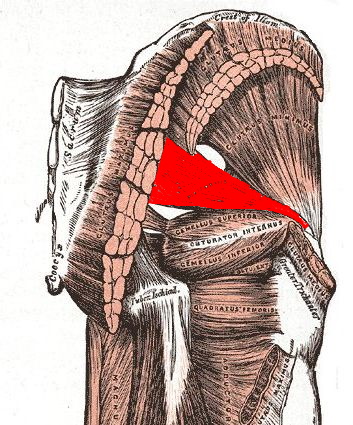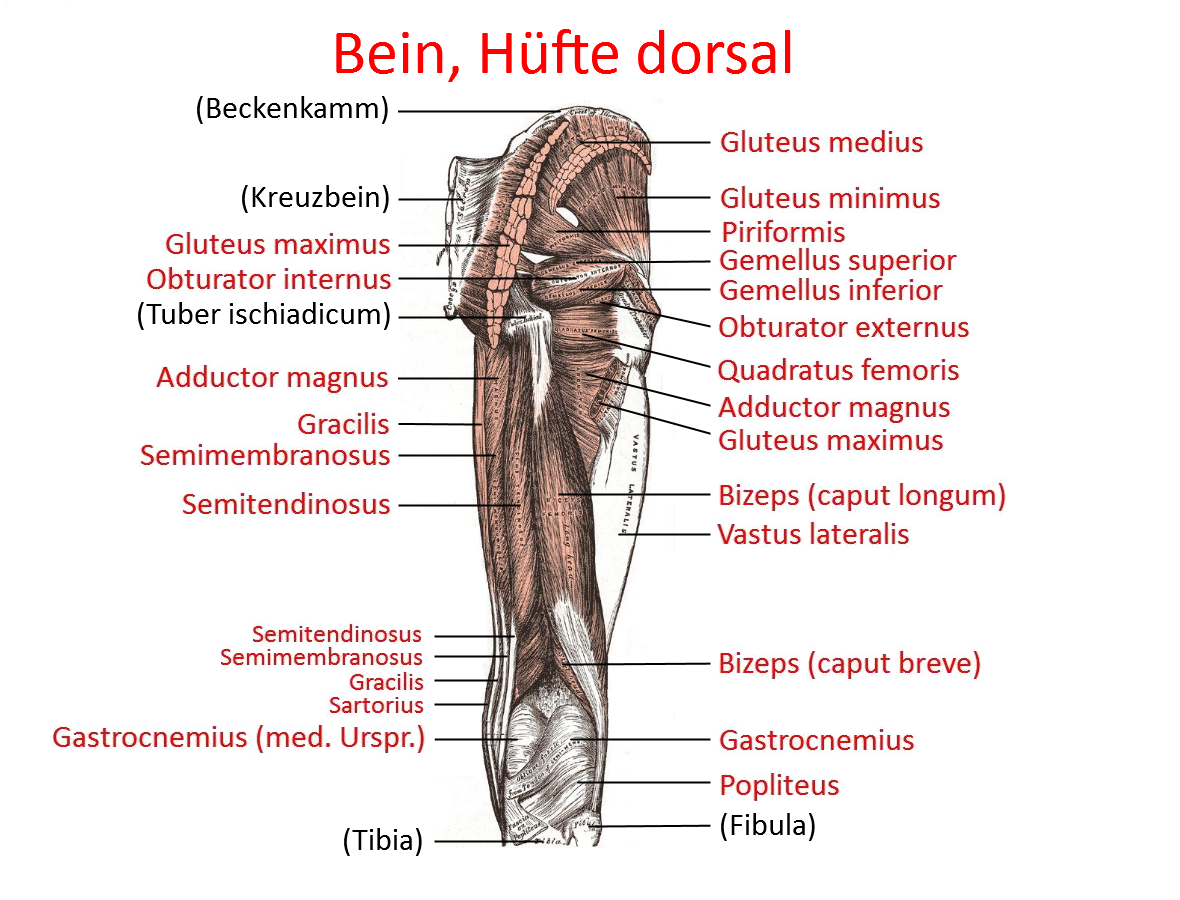yogabook / muscles / piriformis

Contents
Linkmap

M. piriformis
In 15% of the population, the sciatic nerve runs through the piriformis muscle instead of below it through the infrapiriform foramen; those affected are more susceptible to piriformis syndrome (DGS). Even without causing neurological symptoms, the piriformis can become painfully hypertonic due to various stresses, which can even lead to significant gait disturbances.
Origin: fleshy at the ventral pelvic facies of the sacrum and incisura ischiadica major of the ischium, further sacrotuberous ligament and joint capsule of the sacroiliac joint
Attachment: greater trochanter of the femur. Its attachment tendon often confluences with that of the triceps coxae
Innervation: dierct branches of Plexus sacralis (L5-S2) or Nervus ischiadicus
antagonists:
Movement: External rotation, abduction and extension in the hip joint. From (depending on the literature) 60 – 80° it reverses its function and supports internal rotation instead of external rotation
Tests
Heel Contralateral Knee Manoeuver, JAGAS-test, Filler-sign, Pace manoeuver, Piriformis test, FAIR Test (Flexion, Abduction, internal Rotation) for piriformis, Active piriformis test, Seated Piriformis stretch test, Beatty manoeuver, Freiberg sign
